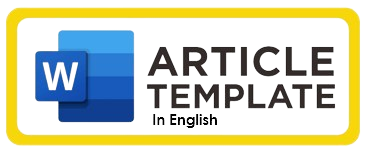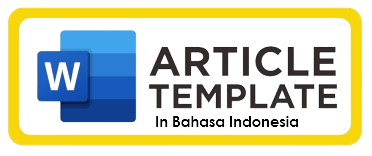Availability and Utilization of Unprinted Education Resources for Teacher Job Performance in Rural and Urban Technical Colleges in Anambra State, Nigeria
DOI:
https://doi.org/10.64420/ijitl.v2i2.263Keywords:
Availability, Utilization, Unprinted Education Resources, Teacher Job Performance, Rural and UrbanAbstract
Background: This study explores the availability and utilization of unprinted (non-textual) educational resources and their impact on teacher job performance in rural and urban technical colleges in Anambra State, Nigeria. Non-printed resources are vital for enhancing teaching effectiveness, particularly in technical education. However, the availability and use of these resources remain challenging, especially in rural schools. Method: A descriptive survey design was employed, with data collected from 343 randomly selected teachers across 15 technical colleges. A structured observational scale assessed the availability (≥50%) and utilization (4-point scale) of non-printed resources. Reliability was tested via a pilot study, and data were analyzed using descriptive and inferential statistics. Result: The study found that urban colleges had higher resource availability (42%) than rural ones (29.6%), but both were below NCCE standards. Utilization of these resources was low in both areas, with mean scores of 1.54 for rural and 2.07 for urban schools. Conclusion: The study concludes that inadequate resource availability and utilization, particularly in rural areas, hinder teaching effectiveness, emphasizing the need for better resource distribution. Contribution: This research highlights the resource disparities between rural and urban technical colleges, offering insights that can inform policies to improve resource allocation and enhance educational outcomes.
References
Adepoju, T. L. (2017). Fundamentals of school administration, planning and supervision in Nigeria. Ibadan.
Ahmed, T., Chandran, V. G. R., Klobas, J. E., Liñán, F., & Kokkalis, P. (2020). Entrepreneurship education programmes: How learning, inspiration and resources affect intentions for new venture creation in a developing economy. The International Journal of Management Education, 18(1), 100327. https://doi.org/10.1016/j.ijme.2019.100327
Ali, B. J., & Anwar, G. (2021). An empirical study of employees' motivation and its influence on job satisfaction. International Journal of Engineering, Business and Management, 5(2), 21-30. https://doi.org/10.22161/ijebm.5.2.3
Alzoraiki, M., Rahman, O. B. A., & Mutalib, M. A. (2018). The effect of the dimensions of transformational leadership on teachers' performance in Yemeni public schools. European Scientific Journal, 8(4), 231-244. http://dx.doi.org/10.19044/esj.2018.v14n25p322
Andambi, R., & Kariuki, B. (2013). The effect of the use of learning resources in teaching social education and ethics in Bungoma District, Kenya. Journal of Emerging Trends in Educational Research and Policy Studies (JETERAPS), 4(1), 157-163. https://www.scholarlinkinstitute.org/jeteraps/articles/pdf
Andambi, R., & Kariuki, B. (2013). The effect of use of learning resources in teaching social education and ethics in Bungoma District, Kenya. Journal of Emerging Trends in Educational Research and Policy Studies, 4(1), 157-163. https://kerd.ku.ac.ke/handle/123456789/1480
Andambi, R., & Kariuki, B. (2013). The effect of use of learning resources in teaching social education and ethics in Bungoma District, Kenya. Journal of Emerging Trends in Educational Research and Policy Studies, 4(1), 157-163. https://hdl.handle.net/10520/EJC132395
Baraibar Diez, E. P., Odriozola Zamanillo, M. D., & Llorente García, I. (2024). Exploring learning congruence and the availability of diverse educational resources: A study conducted in the field of management education. https://doi.org/10.1016/j.ijme.2024.100985
Baylor, N. A., & Ritchie, T. (2016). Experienced and novice Iranian teachers' perceptions of the effect of intrinsic factors on teacher efficacy. Basic Research Journal of Educational Research, 1(1), 4-14.
Bizimana, B., & Orodho, J. A. (2014). Teaching and learning resource availability and teachers’ effective classroom management and content delivery in secondary schools in Huye District, Rwanda. Journal of Education and Practice, 5(9), 111-122. https://ssrn.com/abstract=3178220
Daniel, J. (2013). Audio-visual aids in teaching English. International Journal of Innovative Research in Science, Engineering and Technology, 2(8), 3811-3814. https://www.ijirset.com/upload/august/56_PAPER-%201.pdf
Dodo, A. Y., Ajiki, S. I., & Abimuku, J. M. (2010). Provision and management of material resources for effective teaching and learning of vocational and technical education in Nigeria. A Journal of Vocational and Technical Educators (JOVTED), 2(4), 452-467.
Effiong, O. E., & Igiri, C. E. (2015). Impact of instructional materials in teaching and learning of biology in senior secondary schools in Yakurr LGA. International Letters of Social and Humanistic Sciences, 6(2), 27-33. http://dx.doi.org/10.18052/www.scipress.com/ILSHS.62.27
Eggen, P., & Kauhak, D. (2015). Educational psychology: Windows on classrooms. New Jersey: Prentice Hall, Inc.
Ekpo, O. E. (2017). Instructional strategies and the challenges of implementing school curriculum in Nigeria. Lead paper presented at the 17th Annual Conference of the Curriculum Organization of Nigeria (CON) held at University of Uyo, Uyo, Akwa Ibom State, 14th–17th September.
Ema, A., & Ajayi, N. M. (2018). Teachers' effectiveness and students' academic performance in public secondary schools in Delta State, Nigeria. Studies in Home and Community Science, 3(2), 107-113.
Fagbulu, O. A. (2016). Mate Selection And Fertility Preferences Among Undergraduates In Fuoye (Doctoral dissertation). http://repository.fuoye.edu.ng/handle/123456789/1880
Federal Ministry of Education (2000). The National Master Plan for Technical and Vocational Education Development in Nigeria in the 21st Century.
Ferrer-Estévez, M., & Chalmeta, R. (2021). Integrating sustainable development goals in educational institutions. The International Journal of Management Education, 19(2), 100494. https://doi.org/10.1016/j.ijme.2021.100494
González-González, I., & Jiménez-Zarco, A. I. (2015). Using learning methodologies and resources in the development of critical thinking competency: An exploratory study in a virtual learning environment. Computers in human behavior, 51, 1359-1366. https://doi.org/10.1016/j.chb.2014.11.002
Hanaysha, J. R., Shriedeh, F. B., & In'airat, M. (2023). Impact of classroom environment, teacher competency, information and communication technology resources, and university facilities on student engagement and academic performance. International Journal of Information Management Data Insights, 3(2), 100188. https://doi.org/10.1016/j.jjimei.2023.100188
Ikerionwu, C., & Edgar, D. (2019). Secured service delivery model for outsourced services in a business process outsourcing relationship. International Journal of Information and Communication Sciences, 4(1), 7-17. http://dx.doi.org/10.11648/j.ijics.20190401.12
Ikerionwu, J. C. (2019). Importance of aids and resources in classroom teaching. In A. M. Oyeneyin (Ed.), In perspective of classroom teaching. Abuja: Martmonic Investment Ltd.
Joof, J. E. (2018). Secondary student perceptions of factors affecting failure in science in Portugal. Eurasia Journal of Mathematics, 2(1), 83-93.
Kimeu, R. M., Tanui, E., & Ronoh, A. (2015). The influence of instructional resources on secondary school students’ academic performance in Makueni County, Kenya. International Journal of Scientific Research and Innovative Technology, 2(1), 70-81.
Kola, A. J. (2007). Uses of instructional materials for teaching and learning physics in education in Patigi L.G.A. Nigeria. International Journal of Research in Education, 4(1), 34-50. http://dx.doi.org/10.12691/education-1-7-2
Ndomondo, E. (2024). Instructional resources for innovative history teaching and learning in Tanzania secondary schools: exploring availability and utilization. Cogent Arts & Humanities, 11(1), 2382526. https://doi.org/10.1080/23311983.2024.2382526
Ntui, A. I., & Udah, A. E. (2015). Accessibility and utilization of library resources by teachers in secondary schools in Calabar education zone of Cross River State, Nigeria. Global Journal of Human-Social Science: A Arts & Humanities–Psychology, 15(8), 1-12. http://dx.doi.org/10.5281/zenodo.5400242
Nzeneri, I. S. (2010). Handbook on adult education: Principles and practices (New edition). Uyo: Abigab Associates Limited.
Nzeneri, I.S. (2010). Handbook on Adult Education: Principles and Practices, Uyo Abigab Publishers
Ofoegbu, (2018). Influence of instructional materials on students’ academic performance in biology in Calabar South Local Government Area, Cross River State.
Olagunju, A. M., & Abiona, O. F. (2008). Production and utilization of resources in biology education: A case study of South West Nigeria secondary schools. International Journal of African & African American Studies, 5(2), 45-56.
Olulube, N. P. (2006). Teachers' instructional materials utilization competencies in secondary schools in sub-Saharan Africa: Professional and non-professional teachers’ perspectives. A conference proceeding of the 6th International Educational Technology. Retrieved April 5, 2017, from www.google.com/unich/nwachukwu.ololube@helsinki.fi/pdf
Pandey, S., & Tiwari, S. (2014). Education and prosperity through technology–Case of virtual education limited, Nigeria. Procedia-Social and Behavioral Sciences, 157, 55-62. https://doi.org/10.1016/j.sbspro.2014.11.009
Shehu, M. K., & Mohammed, I. S. (2014). Assessment of resources for sustainable development in engineering and technology education in Bauchi State, Nigeria. Journal of Emerging Trends in Engineering and Applied Sciences (JETEAS), 5(8), 139-144. https://hdl.handle.net/10520/EJC157020
Sulaiman, S. (2019). Self-regulated learning strategies and learning retention in MOOCs.
Ugwuanyi, J. I. (2013). Availability, adequacy, and utilization of physical education teaching resources in secondary schools in Enugu State. Unpublished M.Ed. thesis, submitted to the Department of Health and Physical Education, University of Nigeria, Nsukka.
Xie, K., Di Tosto, G., Chen, S. B., & Vongkulluksn, V. W. (2018). A systematic review of design and technology components of educational digital resources. Computers & education, 127, 90-106. https://doi.org/10.1016/j.compedu.2018.08.011
Xu, S., Shonchoy, A. S., & Fujii, T. (2022). Assessing gender parity in intrahousehold allocation of educational resources: Evidence from Bangladesh. World Development, 151, 1. https://doi.org/10.1016/j.worlddev.2021.105730
Yusuf, S., Olajie, J. O., Olajide, A. L., K, O. S., & Oniyeye, O. N. (2021). Influence of resource utilization dimensions on the lecturers’ effectiveness in universities, Nigeria–A partial least square approach. International Journal of Intellectual Human Resource Management (IJIHRM), 2(1), 39-52. http://dx.doi.org/10.46988/IJIHRM.02.01.2021.006
Downloads
Published
How to Cite
Issue
Section
License
Copyright (c) 2025 Udochukwu Chukwunwike Asuzu

This work is licensed under a Creative Commons Attribution-ShareAlike 4.0 International License.
Authors who publish with this journal agree to the following terms: (1) Authors retain copyright and grant the journal right of first publication with the work simultaneously licensed under a Creative Commons Attribution-ShareAlike 4.0 International. that allows others to share the work with an acknowledgement of the work's authorship and initial publication in this journal; (2) Authors are able to enter into separate, additional contractual arrangements for the non-exclusive distribution of the journal's published version of the work (e.g., post it to an institutional repository or publish it in a book), with an acknowledgement of its initial publication in this journal; (3) Authors are permitted and encouraged to post their work online (e.g., in institutional repositories or on their website) prior to and during the submission process, as it can lead to productive exchanges, as well as earlier and greater citation of published work.




